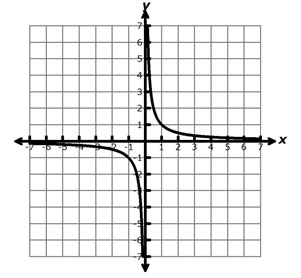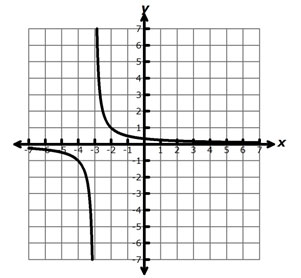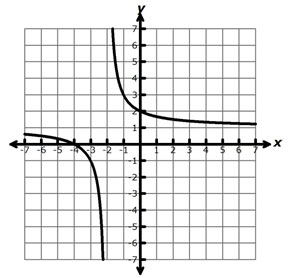Since rational functions are made up of polynomial functions, there are characteristics of the graphs that are similar to other functions, including possible x-intercepts or y-intercepts. However, some characteristics of rational functions are very different from other function families. Those characteristics also create graphs that are different from other graphs that you have studied.
|
Parent Function:
f(x) =
1 over x
1
x
Degree of Numerator: 0
Degree of Denominator: 1
|
 |
|
f(x) =
x + 2 over x squared + 5x + 6
x + 2
x2 + 5x + 6
Degree of Numerator: 1
Degree of Denominator: 2
|
 |
|
f(x) =
x squared + 7x + 12 over x squared + 5x + 6
x2 + 7x + 12
x2 + 5x + 6
Degree of Numerator: 2
Degree of Denominator: 2
|
 |
In this lesson, you will investigate connections between the parameters in the rational function and the attributes of the graph that result.



